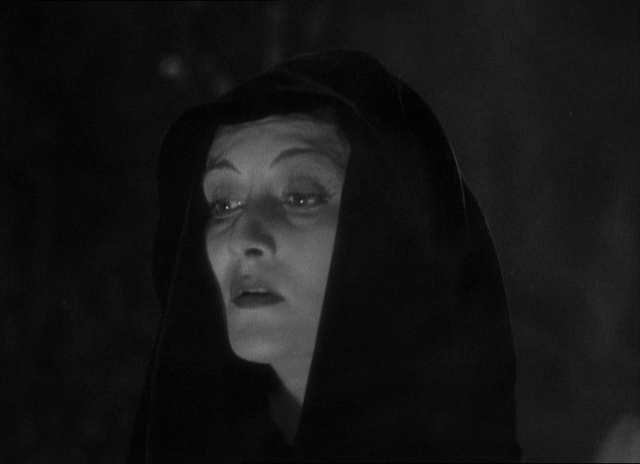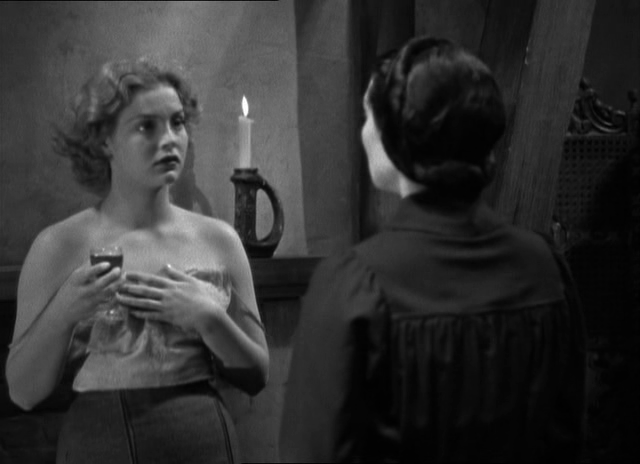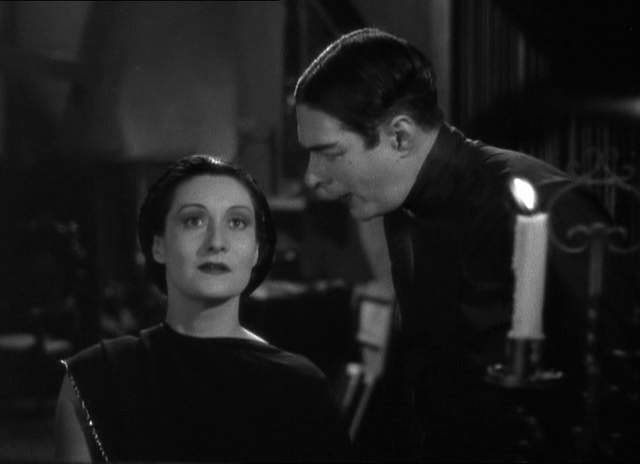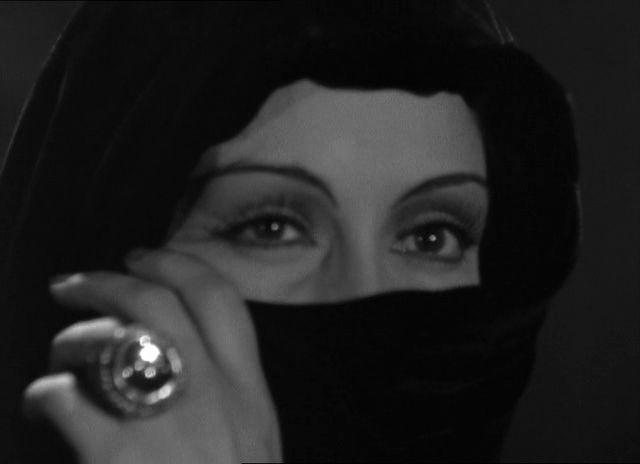|
Genres, Themes, Actors, and Directors:
Response to Peary’s Review:
Peary notes that this “low-budget, still neglected chiller” is “cleverly plotted, atmospheric, and erotic”, and argues that it’s “better than the original” — specifically “at conveying the sexuality implicit in the vampire legend”. He calls out the film’s “most famous scene”, in which Holden’s servant (Irving Pachel) invites a young girl (“lovely” Nan Grey) up to their apartment to pose as Holden’s model; Holden “obviously feels attracted to the half-naked girl and ends up seducing her with her eyes”, then “draining her blood”. It’s a powerfully filmed sequence, one which clearly indicates that Holden’s desires are simply too strong to resist on her own. Indeed, part of what makes the film so appealing is that Holden’s “smart, cultured” character “doesn’t wish to carry on [Dracula’s] evil ways”: while her father was “not to be sympathized with”, given that it was “by choice rather than happenstance that he [did] evil”, Holden’s desperate quest to find a cure for her vampirism makes her an unusually sympathetic “monster”. Both a victim and a villain, she’s someone we’re actually rooting for up until the film’s unfortunately “rushed ending”.
Redeeming Qualities and Moments:
- Gloria Holden as Countess Marya Zaleska

- Marguerite Churchill as Janet (Kruger’s lively assistant and fiancee)

- Holden’s seduction of Lily (Nan Grey)

- Holden’s contentious rapport with her manservant, Sandor (Irving Pachel)

- Atmospheric cinematography

- Memorable imagery

Must See?
Yes, as a seductive follow-up to an early classic.
Categories
Links:
|
2 thoughts on “Dracula’s Daughter (1936)”
A must, mostly as an unexpectedly satisfying sequel.
Director Lambert Hillyer (known primarily for helming westerns) was behind this and, interestingly, ‘The Invisible Ray’ in the same year. Both films can be surprising finds for ffs.
‘DD’ does indeed take the Dracula story in an intriguing direction. At 70 min., it moves swiftly, is intelligently written (even if the finish is a bit odd), and refreshingly includes light comedy. At moments, it seems like it might veer into camp – but ultimately that’s avoided.
Much has been said about the central scene that seems to toy with lesbianism. That’s an odd possibility to consider as intended, since a vampire story is always about the drinking of blood – whether male or female. On the other hand, one can always see a metaphor for uncontrolled sexuality. The way that has played out in various vampire films over the years has shown us a shifting emphasis from hetero to homo to – in the case of this film – bisexuality. Personally, I don’t tend to see vampire films as stories of desire as much as conquest – and evil. (~unless, of course, the sexual aspect is put more blatantly forward, as in ‘Daughters of Darkness’ or ‘The Hunger’).
In the standout role of her career, Holden is compelling and sympathetic as Countess Marya (those eyes!) – tho I did find myself wondering not only how and when Dracula produced a daughter, but who was responsible for turning *her* into a vampire (???). But it’s probably best just to leave that kind of speculation alone.
[According to IMDb, ‘DD’ wasn’t all that ‘low-budget’ – apparently it was one of Universal’s most expensive pics at that time. It certainly looks high-class.]
⭐️⭐️⭐️⭐️ out of ⭐️⭐️⭐️⭐️⭐️
Surprisingly a must see because it’s the – I think – first horror and vampire epic to introduce a lesbian theme. It’s also one of the better second-tier Universal horrors. Much better than Tod Browning’s essential but enervated, stagy, slow Dracula (1931).